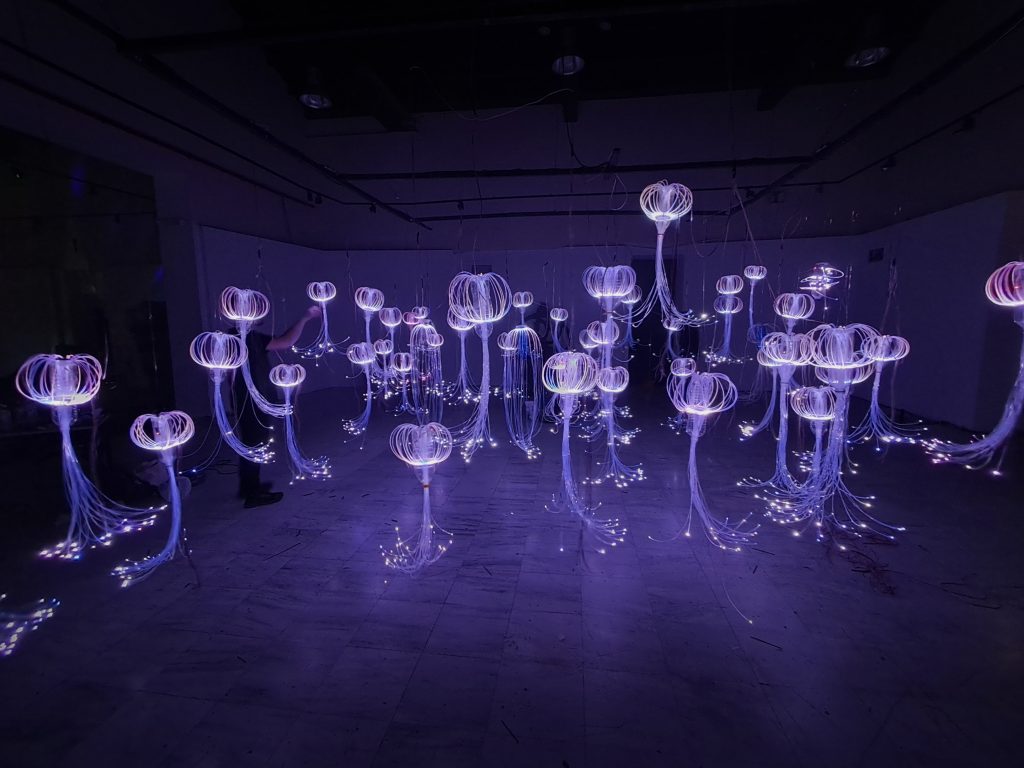
(2025) Yiannis Kranidiotis. Interactive light and sound Installation
Plastic bottles, optical fibers, LEDs, wires, speakers, Arduino, custom software.
Following the excessive pollution of the oceans with plastics, a new species of mutant jellyfish has emerged—PETE Medusa. Named after the PETE plastic bottle that forms its torso, this fictional organism is a hybrid of synthetic waste and biological adaptation. Scientists have observed that many plastic bottles drifting in the ocean have developed plastic tentacles, capable of detecting the presence of living organisms. In response to human proximity, these tentacles emit luminous pulses, an eerie form of communication between artificial life and its creators.
Even more astonishingly, some of these mutant jellyfish have evolved a membrane resembling a primitive speaker at their top, activated by sensors within the tentacles. When humans approach, these speakers produce an unsettling sound, reminiscent of a Geiger counter—a device used to measure radiation. This auditory signal raises an alarming question: Are humans a greater threat to the planet than nuclear catastrophe?
PETE Medusa serves as both a speculative fiction and a stark critique of oceanic plastic pollution. Constructed from common PET plastic bottles, plastic optical fibers, LEDs, and small speakers, it embodies a paradoxical transformation—waste repurposed into an interactive, semi-living entity. This ironic evolution acts as a metaphor for nature’s forced adaptation to human environmental impact. The sculpture’s reactive sound and light elements symbolize a potential future in which nature develops mechanisms to respond—perhaps even resist—the relentless damage inflicted upon it.